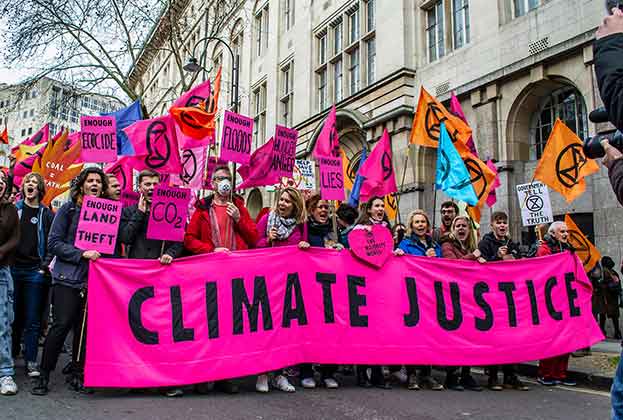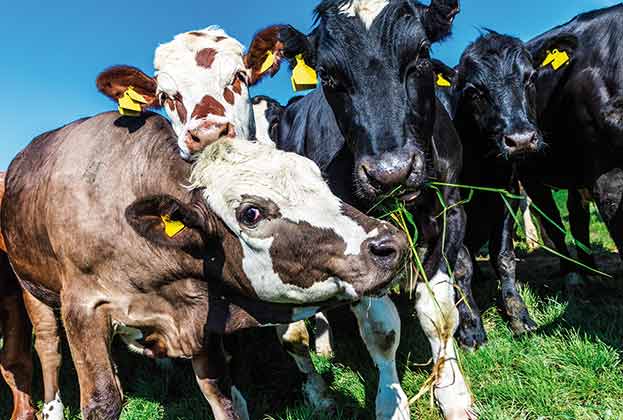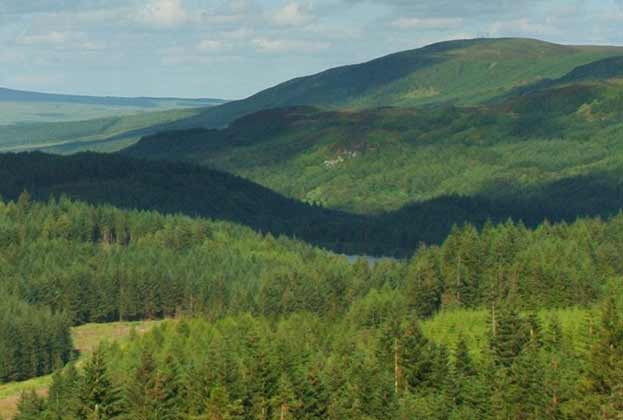How to cut carbon through land use changes
Agriculture occupies a relatively unique position as both a source of greenhouse gas emissions, but also a sink.
In order to explore the impact of net zero on farming systems, we used the Savills Virtual Farm and the Farm Carbon Cutting Toolkit online calculator to estimate the carbon balance of different management and land use scenarios.
We also calculated the impact of these scenarios on the financial viability of the Virtual Farm.
The Savills Virtual Farm
The Virtual Farm is a top 25% arable producer located in the East Midlands. The farm covers 830 hectares of clay soils, of which 809 hectares are arable cropped. The crops on our virtual farm include feed wheat, winter oilseed rape, spring beans, winter oats, spring barley and fallow.
The scenarios
In all scenarios, hedgerows were allowed to grow larger, but no other mitigating factors (e.g. min till) were adopted other than those specified. Where forestry is involved, to allow comparison with annual cropping a discounted cash flow model was used to calculate an average annual output for the timber crop. Sequestration rates vary for a range of tree species, but we have assumed Sitka Spruce is planted because it is a common commercial tree crop. There is no value included for the sale of sequestered carbon, noting that this is a developing market. Where there was a lack of clarity in data, we underestimated figures, and noted that including soil organic matter content in the calculator presented several complexities. Income from BPS was not included in our financial modelling, and figures are based on 2019 market prices.
BASELINE SCENARIO:
CURRENT ARABLE ROTATION
The Virtual Farm currently emits 1,335 tonnes of CO2e per year from fuel, fertilisers and inputs. It offsets just 5.7% of these emissions by sequestering 77 tonnes of CO2e per year in its field margins, woodland and hedges. There is very little sequestration, and most of it (74%) comes from the hedgerows. It is the most profitable model.
SCENARIO 1:
EXTENSIVE MIXED FARM
- Wheat, oil seed rape and winter oats
- 270 head of beef cattle
- 5–15 year old Sitka Spruce
Introducing rotational grazing almost halves the emissions of the Virtual Farm and enables the farm to be carbon positive. Fertilisers and sprays contribute 52% of emissions, whereas livestock accounts for 28% of total emissions.
85% of the sequestration comes from the woodland, 9% from the soil organic matter of the grassland, and the rest is from hedgerows and field margins. Overall, the scenario retains 41% of the land in arable cropping and reduces net emissions by 40%, with the Virtual Farm’s gross margin reducing by 58%.
SCENARIO 2:
ORGANIC ARABLE FARM AND FORESTRY
- Organic wheat, barley and field beans
- 5–15 year old Sitka Spruce
Organic arable and forestry sequesters 2,600% more carbon than the Virtual Farm and has a substantial positive carbon balance. Organic fertilisers still lead to induced emissions from the soil and 57% of the farm’s emissions are linked to the use of organic fertilisers.
Although the emissions in this scenario are not reduced substantially, the increase in sequestration generates an overall negative balance. Over 80% of the sequestration is from the woodland, the rest comes from hedgerows and field margins.
SCENARIO 3:
EXTENSIVE LIVESTOCK ENTERPRISE
- 500 head of beef cattle (housed outdoors)
- 1,800 head of sheep (housed outdoors)
- 5–15 year old Sitka Spruce
Under this scenario the arable enterprise is replaced with an extensive livestock enterprise. The Farm becomes a net emitter, with 80% of emissions from livestock. The grassland results in a big increase in sequestration though, with 56% from the soil organic matter of the grassland, 32% from the woodland and the final 12% from hedgerows. The principal sources of emissions are livestock (80%) and fertilisers (10%). The farm’s gross margin has decreased by 87% compared to the baseline.
SCENARIO 4:
ALL FORESTRY
- Whole farm planted with 5–15 year Sitka Spruce
This scenario sequesters the most carbon, but the farm’s gross margin has decreased by 86% compared to the baseline. Woodland accounts for 95% of sequestration, the final 5% is from hedgerows. This scenario could also have the most significant impact upon the farm’s capital value because forestry is effectively a permanent land use change.
Emissions from this model are split evenly between fuel and the aggregate materials needed to enable forestry operations. This model has almost one tenth of the emissions of the Virtual Farm and it becomes a substantial net sink of carbon, absorbing 6,800% more than the baseline.
VIRTUAL FARM: MANAGEMENT RESPONSES TO REDUCE CO2e EMISSIONS
The results of the carbon modelling will be used to alter management practices on the Virtual Farm, but given that all the scenarios have a negative impact on financial viability, none are being considered for adoption in the short term. Management will focus on measures to reduce arable crop production CO2e emissions below the current baseline. These include:
- Using nitrogen fertiliser products produced with lower carbon footprints.
- Selecting nutrient sources and crop genetics with higher potential nitrogen use efficiencies.
- Using fertiliser treated with nitrification/urease inhibitors, or coated fertilisers.
- Further adoption of precision farming techniques for efficient input and machinery use.
- Cutting emissions by reducing machinery idling time and fitting low energy building lighting.
- Exploring the feasibility of switching from conventional crop establishment techniques to direct or strip drilling, cutting fuel use and oxidation of soil organic matter.
Ultimately, with sequestration on farm currently offsetting just 5.7% of the Virtual Farm’s emissions, emissions reduction in isolation will not lead to the farm achieving net zero. This suggests a degree of land use change or offsetting elsewhere will be required.
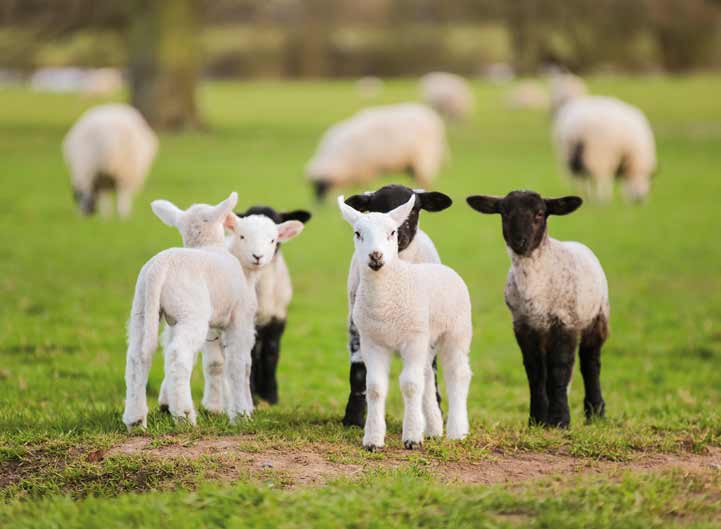
THE IMPACT OF SOIL ORGANIC MATTER
Across the whole 809 cropped hectares, a policy of increasing soil organic matter content from 2.00% to 2.01% would sequester 568 tonnes of CO2 per year. Research from Defra suggests that full arable reversion could increase soil carbon levels by 0.1% per year, but we substantially underestimated this in our modelling. However, inclusion of livestock has a large negative impact on emissions, and the subsequent treatment of methane and soil organic matter in calculations are central to understanding carbon impact. Taking these uncertainties and limitations into account means that overall forestry has the largest predictable impact on carbon balance.
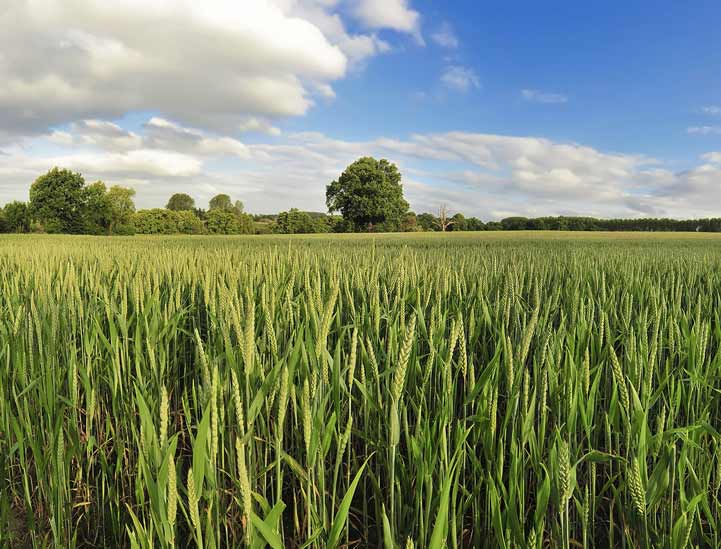
What the results say…
The results of this modelling exercise highlight that for an arable farm a large proportion of emissions are due to the energy intensive processes used to manufacture artificial fertilisers. Regardless of whether they are organic or inorganic, the application of nitrogen to land promotes biological processes that lead to an increase in nitrous oxide and ammonia emissions.
The crucial factor remains the impact on gross margins as a result of a net zero land use policy. Enterprises on land have to be economically viable and are essential in providing food. A balance between crop production and forestry could allow a farm to achieve net zero, however a considerable area of the farm would require converting to forestry, which could affect the viability of the remaining production enterprise, and this may not be a suitable land use for the area. A system of offsetting carbon on another piece of land may be more viable.
The Virtual Farm, with the highest level of emissions, has the greatest financial viability. At the other end of the spectrum, afforestation of the whole farm provides 98% sequestration yet decreases the gross margin by 86% (alongside reducing the capital value of the land). Despite the sequestration possibility of rural land, land managers are unlikely to make large scale land use change decisions until carbon itself is valued as a counter-balance to productive agriculture. The question is, therefore, how the private carbon marketplace and future agri-environmental policy will develop to incentivise net zero farming, or whether farmers will be forced through regulation to adopt these practices in spite of the market reality.
Read the articles within Spotlight: Rural Land and Carbon below.
.jpg)
